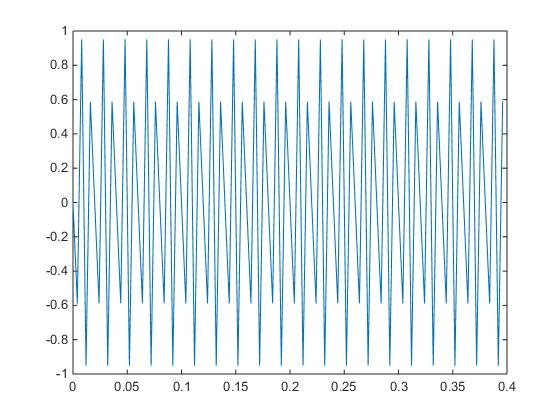Good Afternoon,
I am attempting to input a sinusoidal signal to the ADS1299 EVM using J6 similar to the signal that can be seen in section 8.6 (page 49) of the user guide, I am aware that all 8 channels can be used simultaneously but for starters I would simply like to use channel 1 alone.
I followed the instructions found in section 4.6.2 (page 17) for single ended inputs however the wave I am getting is completely wrong as my input is sinusoidal (snapshot of output is attached). I followed the instructions exactly even with the default jumper settings, which led me to believe there might be a typo because one of the settings requires that JP18 be set to 2-3 rather than 1-2 the way it came and whenever I did this the analysis would run indefinitely until I manually closed the GUI, I looked at the schematics and JP18 relates to the clock and by setting 2-3 the configuration is set to EXT_CLK, please confirm if this is a typo. I also made sure to close the SRB1 pin in the GUI and in channel registers I set TEST Source to Driven Externally, under Globally Set Channels I set channel 1 to Power, SRB2 Open and Channel Input to Normal Electrode (attached is a snapshot of the settings.
Attached are also pictures of the set up on the ADS1299, I have pin 36 of J6 connected to my input and pin 2 of JP8 (which I believe to be the pin for SRB1) connected to ground.
Thank you for your help,
Carolina




